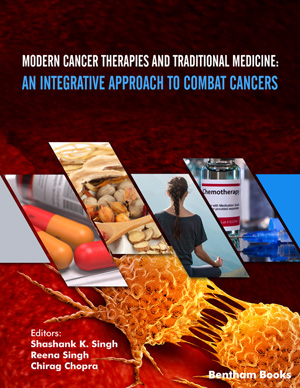Abstract
Background: Triple-negative breast cancer cases with no available targeted therapy and advanced cases of luminal and HER2+ that become resistant to available state-of-the-art treatments are priorities in cancer research. Immune checkpoint blockade, particularly PDL1/PD1 inhibition, is suggested as a potential option for these patients suffering from several other types of cancers, such as melanoma. However, the exact subpopulation of breast cancer patients that overexpress PDL1 is yet to be completely identified. Additionally, reports on the value of PDL1 as a biomarker for the prognosis of cancer and its correlation with clinicopathological features of malignancy are diverse.
Methods: In this study, we performed immunohistochemistry on 60 breast cancer, including 22 triple-negative and 38 HER2+ cases, and 20 paired lymph node samples.
Results: PDL1 expression was present in 21. 6% (13/60) of breast cancer samples. PDL1 expression is significantly associated with ER/PR negativity and the grade of the tumor. The association between PDL1 positivity and recurrence and the overall survival of patients was not significant.
Conclusion: PDL1 expression is similar between triple-negative and non-luminal HER2+ cases, thus some of the advanced non-luminal HER2+ cases might be benefitted from immune checkpoint blockade.
Keywords: Breast cancer, triple-negative, PDL1, HER2-positive, immunohistochemistry, tumer.
Graphical Abstract
[http://dx.doi.org/10.3322/caac.21551] [PMID: 30620402]
[http://dx.doi.org/10.1634/theoncologist.2011-S1-01] [PMID: 21278435]
[http://dx.doi.org/10.1056/NEJMoa1003466] [PMID: 20525992]
[http://dx.doi.org/10.1038/nature13904] [PMID: 25428503]
[http://dx.doi.org/10.1056/NEJMoa1606774] [PMID: 27718847]
[http://dx.doi.org/10.1016/S0140-6736(15)01281-7] [PMID: 26712084]
[http://dx.doi.org/10.1016/j.clinthera.2015.02.018] [PMID: 25823918]
[http://dx.doi.org/10.1093/annonc/mdt303] [PMID: 23917950]
[http://dx.doi.org/10.1093/annonc/mdv221] [PMID: 25939896]
[http://dx.doi.org/10.1001/jama.2018.19323] [PMID: 30667505]
[http://dx.doi.org/10.1158/2326-6066.CIR-13-0127] [PMID: 24764583]
[http://dx.doi.org/10.1371/journal.pone.0088557] [PMID: 24551119]
[http://dx.doi.org/10.1084/jem.192.7.1027] [PMID: 11015443]
[http://dx.doi.org/10.1038/nm730] [PMID: 12091876]
[http://dx.doi.org/10.1073/pnas.192461099] [PMID: 12218188]
[http://dx.doi.org/10.1016/j.imlet.2005.09.007] [PMID: 16236366]
[PMID: 30855757]
[http://dx.doi.org/10.1200/JCO.2015.64.8931] [PMID: 27138582]
[http://dx.doi.org/10.1007/978-3-319-70197-4_10]
[http://dx.doi.org/10.1038/srep13110] [PMID: 26279307]
[http://dx.doi.org/10.18632/oncotarget.15532] [PMID: 28430626]
[http://dx.doi.org/10.1038/s41598-019-50898-3] [PMID: 31591439]
[http://dx.doi.org/10.1016/j.humpath.2015.09.006] [PMID: 26541326]
[http://dx.doi.org/10.1136/jclinpath-2016-203990] [PMID: 28373294]
[http://dx.doi.org/10.1016/j.humpath.2018.06.008] [PMID: 29936058]
[http://dx.doi.org/10.1038/s41598-019-52944-6] [PMID: 31723167]
[http://dx.doi.org/10.1007/s10549-016-4095-2] [PMID: 28058578]
[http://dx.doi.org/10.1007/s10549-014-2988-5] [PMID: 24842267]
[http://dx.doi.org/10.5858/arpa.2016-0361-RA] [PMID: 28418281]
[http://dx.doi.org/10.18632/oncotarget.3216] [PMID: 25669979]
[http://dx.doi.org/10.1097/PAS.0000000000000780] [PMID: 28195880]
[http://dx.doi.org/10.5152/ejbh.2019.4912] [PMID: 31620682]
[http://dx.doi.org/10.1186/s12967-016-0925-6] [PMID: 27286842]
[http://dx.doi.org/10.1016/j.clbc.2015.07.006] [PMID: 26364145]
[http://dx.doi.org/10.1200/JCO.2014.59.4358] [PMID: 25605845]
[http://dx.doi.org/10.1158/1078-0432.CCR-13-2702] [PMID: 24647569]
[http://dx.doi.org/10.1126/scitranslmed.3006504] [PMID: 23986400]
[http://dx.doi.org/10.4049/jimmunol.181.10.6738] [PMID: 18981091]























